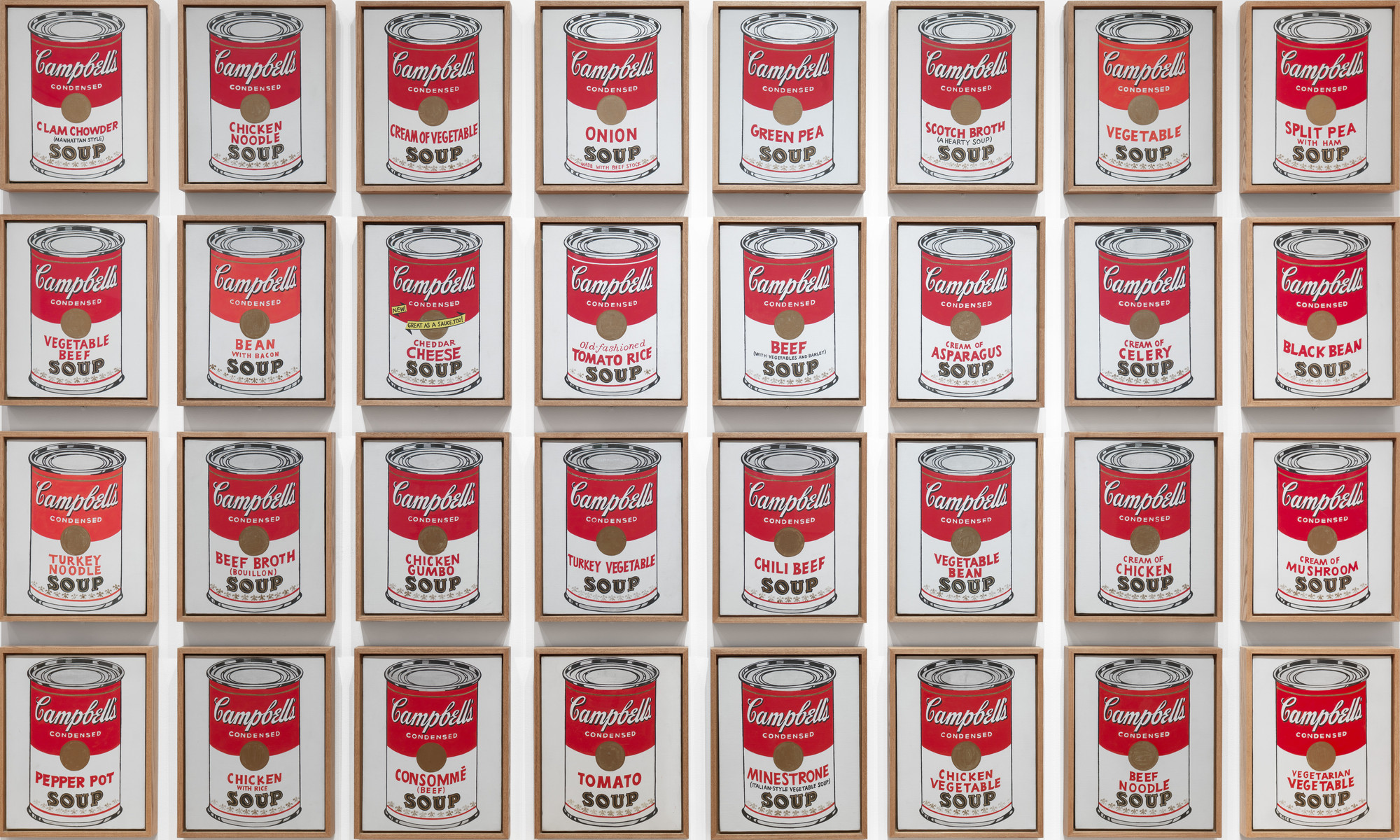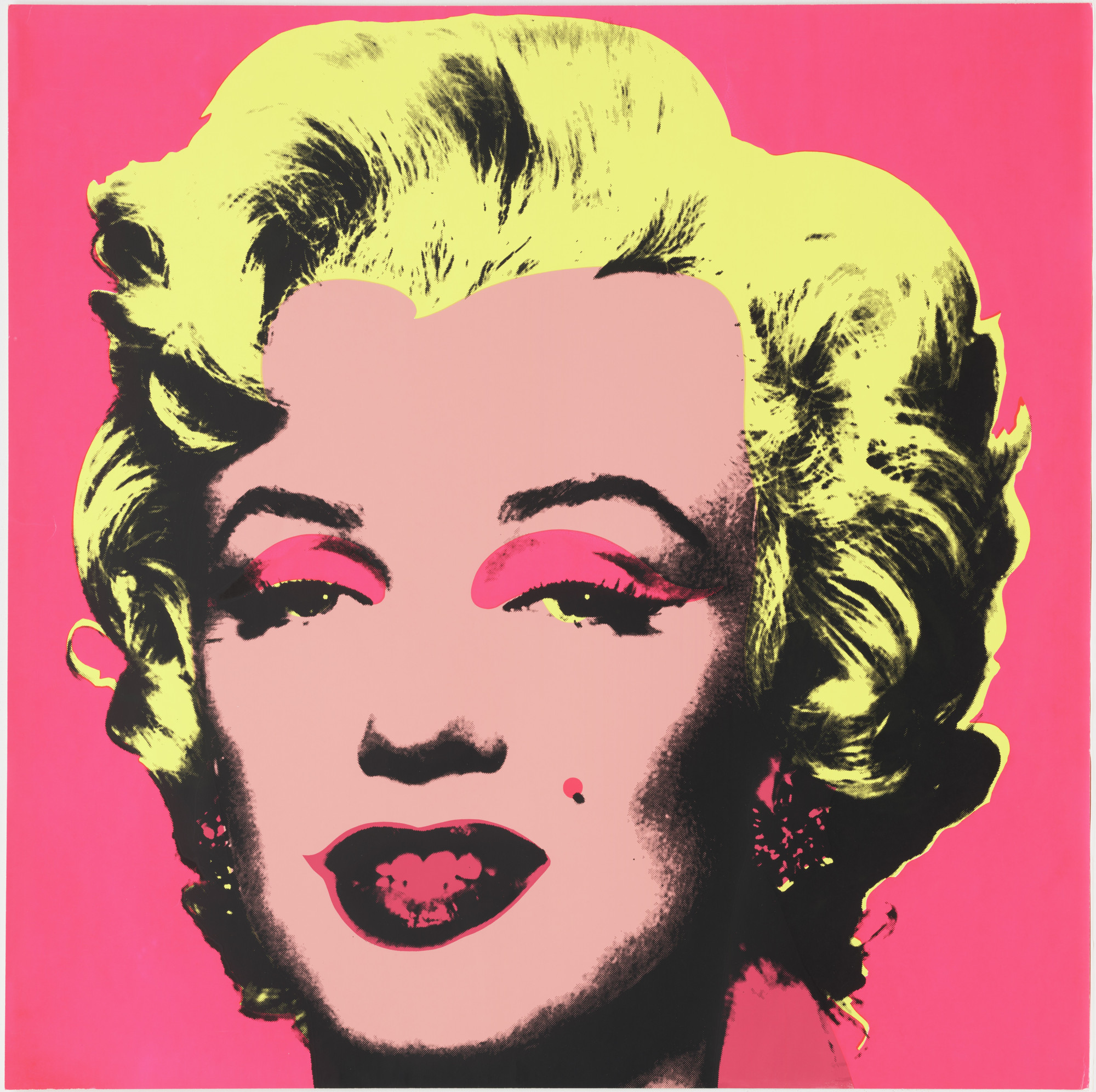Few artists are so universally associated with a single image — the Campbell’s Soup Can — or with a broader cultural phenomenon — celebrity worship — than Warhol. But behind these iconic works lies a far richer story: the life of a man who challenged the boundaries of art, commerce, and fame, and in the process redefined what it meant to be an artist in the 20th century.
This article explores Warhol’s biography, his most famous works, the cultural and artistic influences that shaped him, and the extraordinary legacy he left behind.
Early Life and Background
Andy Warhol was born Andrew Warhola in Pittsburgh, Pennsylvania, in 1928. His parents were Slovakian immigrants who had settled in the United States seeking better opportunities. Growing up in a working-class family during the Great Depression, Warhol experienced both hardship and the promise of the American dream — themes that would later infuse his work with a sharp awareness of consumer culture.
As a child, Warhol suffered from Sydenham’s chorea, a nervous system disorder that left him bedridden for long periods. During this time, he developed a fascination with celebrity magazines, comic books, and Hollywood movies. He also began to draw, and his artistic talent became apparent early on.
In 1949, Warhol graduated from Carnegie Institute of Technology (now Carnegie Mellon University) with a degree in pictorial design. Soon after, he moved to New York City, where he began working as a commercial illustrator, creating advertisements, fashion illustrations, and magazine spreads. His background in advertising and commercial graphics was crucial: Warhol’s later art would draw heavily on the techniques and aesthetics of mass media.

The Birth of Pop Art
In the late 1950s and early 1960s, a new art movement was beginning to take shape in the United States and Britain: Pop Art. This movement sought to break away from the emotional intensity of Abstract Expressionism — artists like Jackson Pollock and Willem de Kooning — by turning instead to the imagery of everyday life: comic strips, advertising, consumer goods, and celebrities.
Warhol quickly emerged as a leading figure of this movement. Where others saw low culture, Warhol saw the perfect reflection of American society. He once remarked:
“Pop art is about liking things.”
By elevating soup cans, dollar bills, and movie stars to the level of fine art, Warhol blurred the line between high culture and mass production, asking provocative questions about originality, authorship, and the nature of art itself.

Campbell’s Soup Cans: Everyday Consumerism as Art
In 1962, Warhol exhibited a series of 32 paintings of Campbell’s Soup Cans, each canvas representing a different variety — Tomato, Chicken Noodle, Cream of Mushroom, and so on. The exhibition, held at Ferus Gallery in Los Angeles, marked a turning point in art history.
The soup can was not just a clever motif; it was a radical statement. Warhol had chosen an object of everyday consumer life, stripped it of artistic flourish, and presented it as art. Critics were scandalized. Some dismissed the works as banal or mechanical. Others saw in them a profound reflection of American culture.
Warhol himself explained the choice simply:
“I used to have the same lunch every day, for twenty years, I guess, the same thing over and over again.”
What seemed mundane was, in Warhol’s hands, transformed into a mirror of mass production and consumption. The Campbell’s Soup Cans also highlighted Warhol’s fascination with repetition, a theme that would dominate his career.

Warhol’s Celebrities: Marilyn Monroe, Elvis Presley, and Beyond
If the soup cans represented Warhol’s interest in consumer products, his celebrity portraits reflected his obsession with fame. In the early 1960s, Warhol began producing silkscreen paintings of stars such as Marilyn Monroe, Elizabeth Taylor, Elvis Presley, and Jackie Kennedy.
The silkscreen process — borrowed from commercial printing — allowed Warhol to reproduce images quickly and repeatedly, mimicking the endless circulation of celebrity photographs in magazines and newspapers. The resulting portraits were both glamorous and haunting.
Warhol’s Marilyn Diptych (1962), created shortly after Monroe’s death, exemplifies this duality. Fifty images of the actress, half in color and half in fading black and white, convey both her vibrant allure and her tragic mortality. The repetition turns Marilyn into an icon, yet also strips her of individuality, suggesting the dehumanizing effects of celebrity culture.

The Factory: Art, Fame, and Collaboration
In 1963, Warhol established his famous studio, The Factory, in New York City. More than just a workspace, The Factory became a cultural hub where artists, musicians, filmmakers, writers, and socialites gathered. Lou Reed and The Velvet Underground, Edie Sedgwick, and countless other figures became part of Warhol’s orbit.
The Factory symbolized Warhol’s approach to art as a kind of production line. Assistants often helped create works, echoing the mass-production processes of the commercial world. This collaborative ethos challenged traditional notions of the solitary artistic genius, further blurring the lines between art and industry.

Warhol’s Expanding Mediums
Although best known for his paintings, Warhol worked across a wide range of media. He produced experimental films such as Sleep (1963), an eight-hour recording of a man sleeping, and Empire (1964), an eight-hour static shot of the Empire State Building. These works tested the boundaries of cinema and questioned the viewer’s patience and perception.
Warhol was also deeply involved in music. He managed The Velvet Underground, designing their famous banana album cover, and he collaborated with performance artists and avant-garde musicians throughout the 1960s. His work in film, photography, publishing, and design demonstrated a relentless curiosity about all forms of cultural production.
Influences on Warhol
Warhol’s artistic vision was shaped by a combination of personal background, cultural environment, and historical context:
-
Commercial Illustration: His early career in advertising taught him the power of branding, repetition, and graphic clarity.
-
Mass Media: Magazines, newspapers, and television fed his fascination with celebrity culture and consumer imagery.
-
Abstract Expressionism: Though he rejected its heroic seriousness, Warhol was influenced by its scale and ambition. His canvases, while cool and detached, often rivaled the monumental dimensions of Abstract Expressionist works.
-
American Consumer Culture: The postwar boom of the 1950s and 1960s, with its proliferation of supermarkets, television, and advertising, provided Warhol with endless subject matter.
-
Catholicism: Raised in a devout Byzantine Catholic family, Warhol retained a lifelong interest in ritual, repetition, and iconography. Many scholars argue that his portraits of celebrities function as modern icons, echoing the religious images of his youth.
Warhol and Death
While Warhol’s work often appeared superficial or celebratory of consumerism, it was also deeply preoccupied with mortality. His Death and Disaster series (1962–63) depicted car crashes, suicides, electric chairs, and images of civil unrest, all repeated through the silkscreen process. By treating death with the same mechanical detachment as soup cans or movie stars, Warhol suggested that modern media had desensitized society to tragedy.
This tension — between glamour and decay, fame and fragility — is central to understanding Warhol. His work captured both the allure and the emptiness of the culture he mirrored.
Later Career and Business Art
In the 1970s and 1980s, Warhol became increasingly enmeshed in the world of high society. He produced commissioned portraits of wealthy patrons, turning his silkscreen technique into a form of luxury branding. He called this phase of his career “business art” and embraced the idea that making money could itself be an artistic practice.
During this period, Warhol also collaborated with younger artists such as Jean-Michel Basquiat, Francesco Clemente, and Keith Haring, bridging the gap between Pop Art and the emerging Neo-Expressionist and street art movements.

Legacy and Influence
Andy Warhol died in 1987 following complications from gallbladder surgery. Yet his influence has only grown in the decades since. Today, Warhol is recognized as one of the most important and influential artists of the 20th century.
His legacy can be seen in multiple ways:
-
Art Market: Warhol’s works remain among the most sought-after at auction, often commanding tens of millions of dollars.
-
Artistic Influence: Countless contemporary artists, from Jeff Koons to Damien Hirst, have built careers on themes Warhol pioneered: consumerism, celebrity, and mass production.
-
Cultural Influence: Warhol anticipated the culture of reality TV, social media, and influencer celebrity. His prediction that “In the future, everyone will be world-famous for 15 minutes” has never felt more prescient.
-
Institutional Legacy: The Andy Warhol Museum in Pittsburgh, one of the largest museums in the world dedicated to a single artist, continues to preserve and interpret his work.
Why Warhol Still Matters
More than thirty years after his death, Andy Warhol remains a central figure in art and culture. His work compels us to question the value of originality, the power of media, and the role of art in a consumer-driven society.
By painting soup cans and celebrities, Warhol did more than celebrate popular culture; he revealed its mechanics, its myths, and its contradictions. He was at once a mirror of his age and a prophet of ours.
The phrase “American pop artist painted cans of soup and celebrities” may sound simple, but behind it lies the complex, fascinating figure of Andy Warhol. From his humble beginnings in Pittsburgh to his reign as the king of Pop Art, Warhol transformed the landscape of modern art and culture. His Campbell’s Soup Cans challenged the meaning of art itself, while his portraits of Marilyn Monroe and other stars exposed both the allure and emptiness of fame.
Influenced by advertising, mass media, and consumer culture, Warhol built an artistic practice that blurred the boundaries between high and low, art and commerce, life and performance. Today, his influence remains everywhere: in museums, in fashion, in advertising, in social media, and in the very way we think about fame and consumption.
Warhol once said:
“I don’t think art should be only for the select few. I think it should be for the mass of the American people.”

By painting soup cans and celebrities, he ensured that it was.
Discover Andy Warhol signed prints for sale and contact our teams via info@guyhepner.com for latest availabilities.
